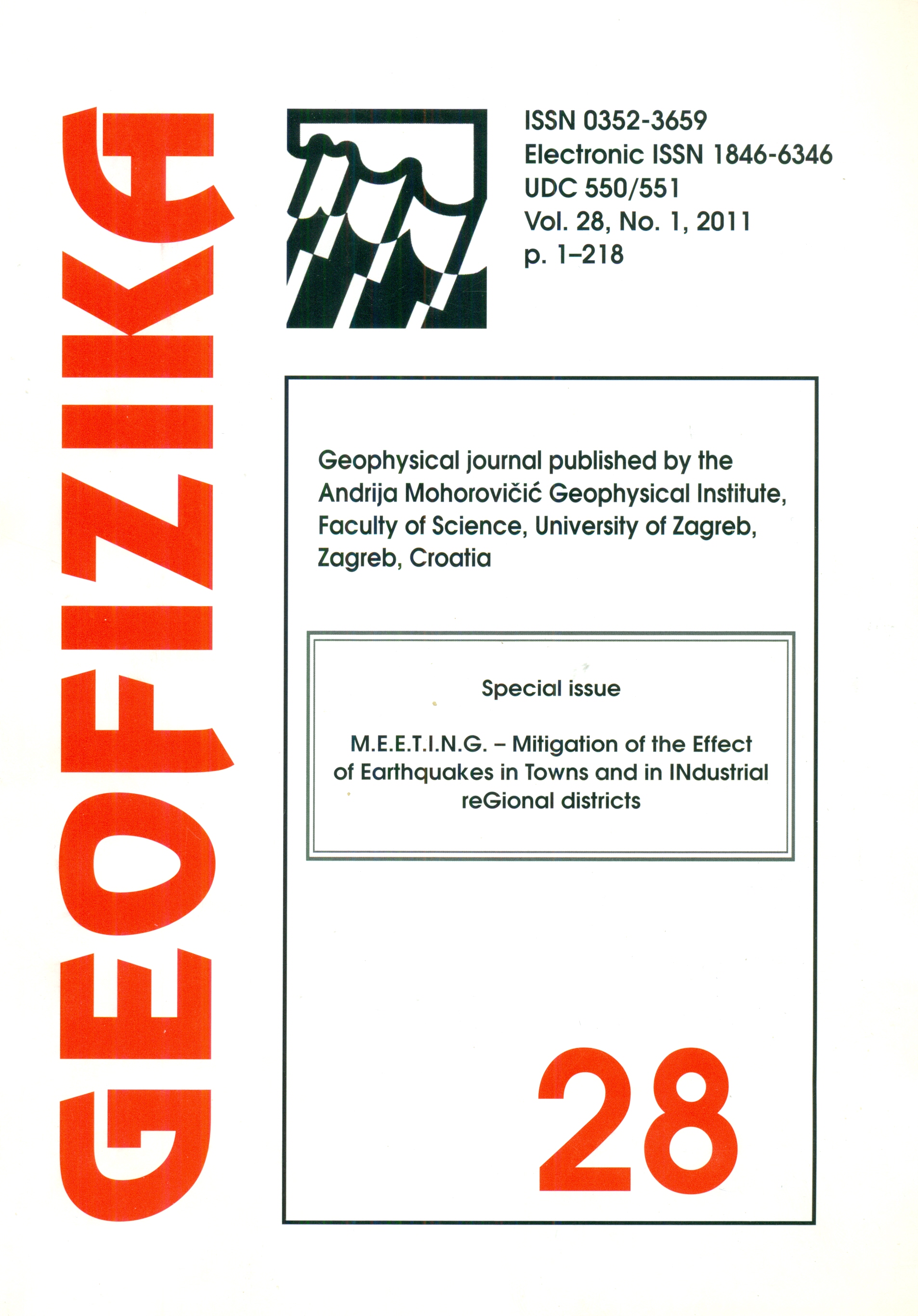Modelling of the recent crustal movements at the territory of Croatia, Slovenia and Bosnia and Herzegovina
Keywords:
recent crust movements, vertical movements, bench marks, levelling networks, grid modelAbstract
The paper presents the results of determining vertical displacements of the Earth’s crust at the territory of Croatia, Slovenia, and Bosnia and Herzegovina on the basis of the data obtained in the process of establishing geometric levelling networks of the highest order of accuracy. These are the networks of the Austrian precise levelling, I. levelling of high accuracy and II. levelling of high accuracy that was established successively within the period of about 100 years (1874-1973). In accordance with the hypotheses made and the selected methodology for defining the displacements, a concrete numeric quantification of displacements has been obtained, the size and the direction of Earth's crust displacements have been determined and their characteristics and empirical parameters of behaviour indicated. It is shown that bench mark displacements are of significant amount as related to the measurement accuracy of height differences in levelling networks and that long-wave and short-wave component of their variation can be noticed in correlation with the positional distribution of bench marks. The displacements have been modelled by means of so called grid models created by the combination of the regression modelling and the minimal curvature surface modelling. Thus, on the basis of modelled vertical displacement values the speed of uniform vertical crustal movements has been determined. In spite of the fact that a very simple methodology of displacement and movement determination has been used, that is based on the absolute heights of identical bench marks positioned in various epochs – networks, the obtained results present an adequate starting point for the selection and application of more sophisticated methodologies in determining and modelling of displacements in the forthcoming research, i.e. the starting point that enables interdisciplinary explanation of geodynamic processes leading to the changes in the shape and geometry of the Earth’s crust at the observed area.
Downloads
Published
Issue
Section
License
Copyright (c) 2021 Geofizika journal

This work is licensed under a Creative Commons Attribution-NonCommercial 4.0 International License.

